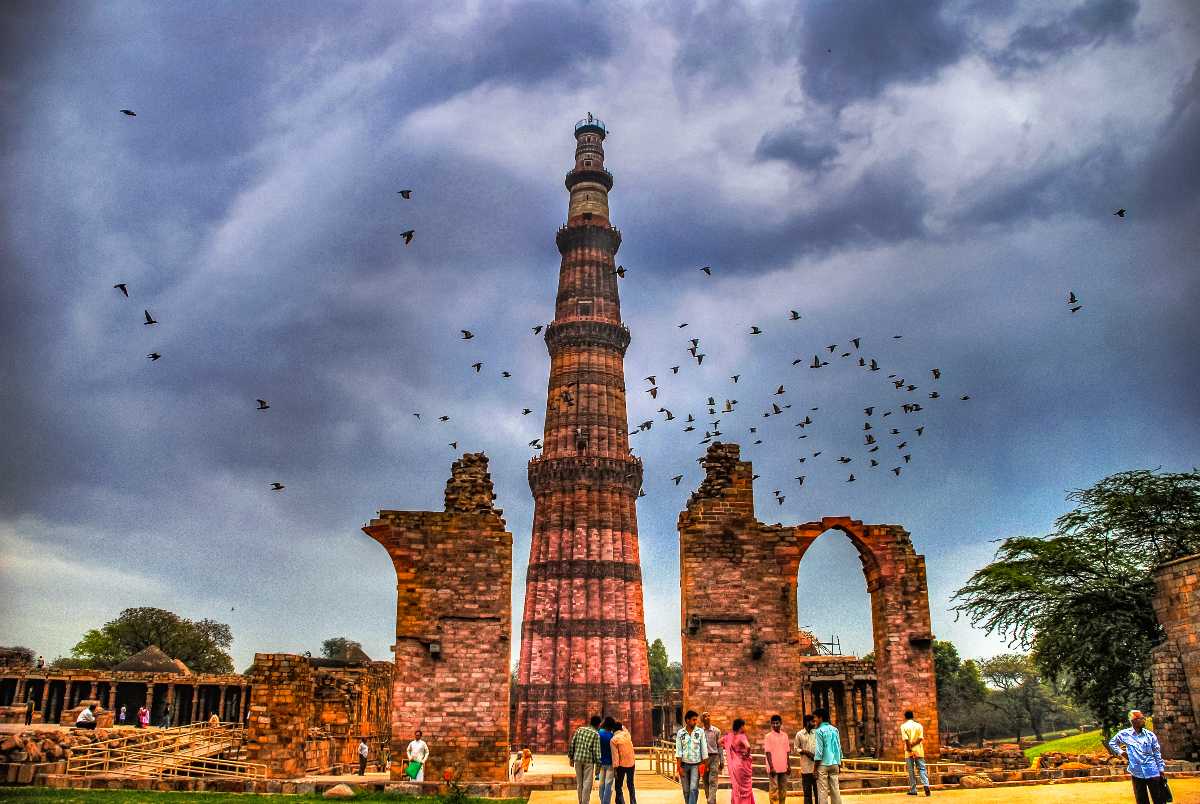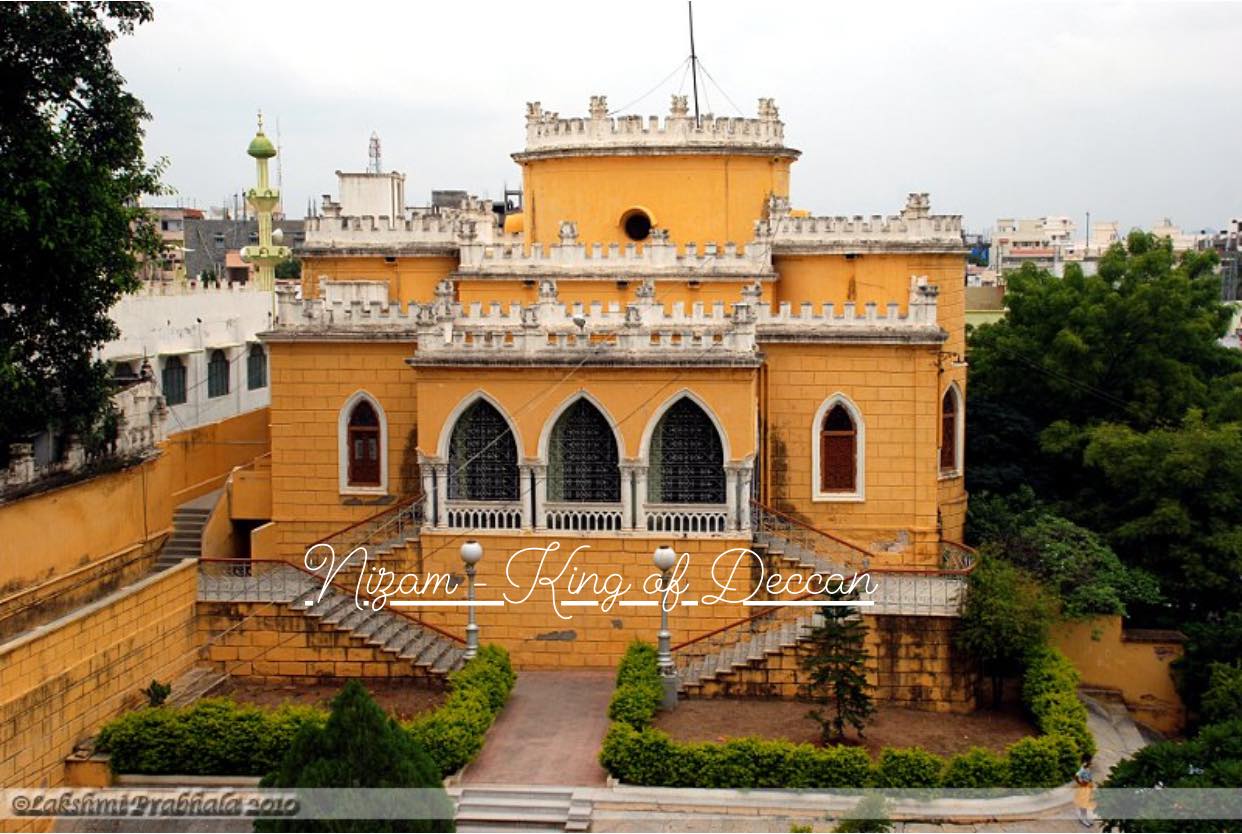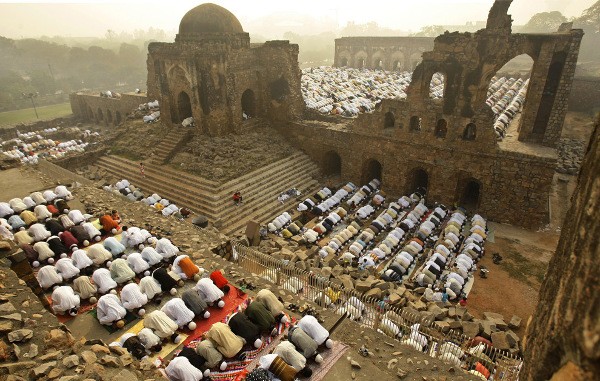The Qutub Minar is a minaret and “victory tower” that forms part of the Qutb complex, a UNESCO World Heritage Site in the Mehrauli area of New Delhi, India. The height of Qutb Minar is 72.5 meters, making it the tallest minaret in the world built of bricks.
The tower tapers, and has a 14.3 metres (47 feet) base diameter, reducing to 2.7 metres (9 feet) at the top of the peak. It contains a spiral staircase of 379 steps.
It was built over the ruins of the Lal Kot, the citadel of Dhillika. Qutb-ud-din Aibak, a deputy of Muhammad of Ghor, who founded the Delhi Sultanate after Muhammad of Ghor’s death, started construction of the Qutb Minar’s first storey in 1199. This level has inscriptions praising Muhammad of Ghor. Aibak’s successor and son-in-law Shamsuddin Iltutmish completed a further three storeys. After a lightning strike in 1369 damaged the then top storey, the ruler at the time, Firuz Shah Tughlaq, replaced the damaged storey, and added one more. Sher Shah Suri also added an entrance while he was ruling and the Mughal emperor Humayun was in exile.
It is usually thought that the tower is named for Qutb-ud-din Aibak, who began it, but it is also possible that it is named after Khwaja Qutbuddin Bakhtiar Kaki a 13th-century sufi saint; Shamsuddin Iltutmish was a devotee of his. Below is a photochromic print of the minarets.





